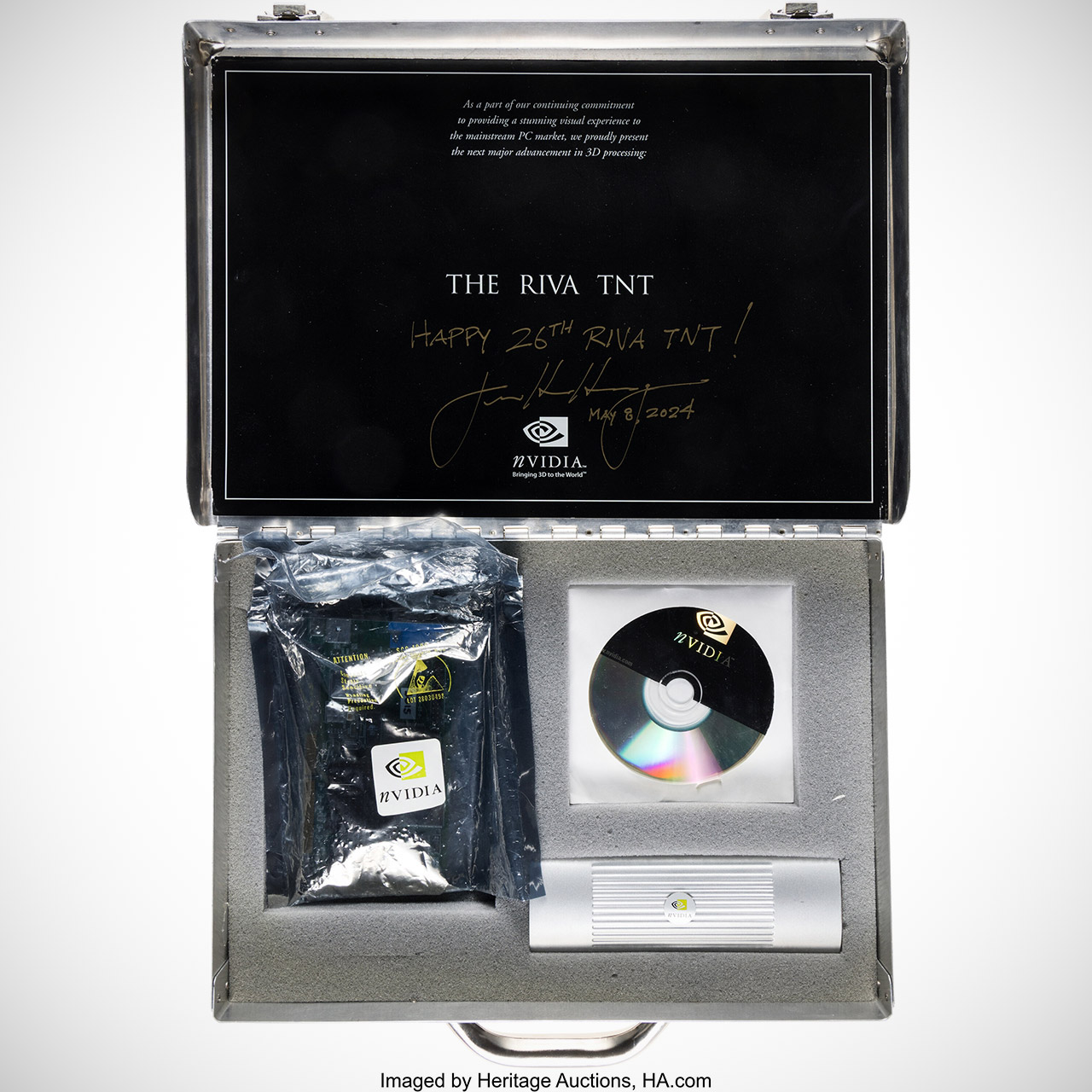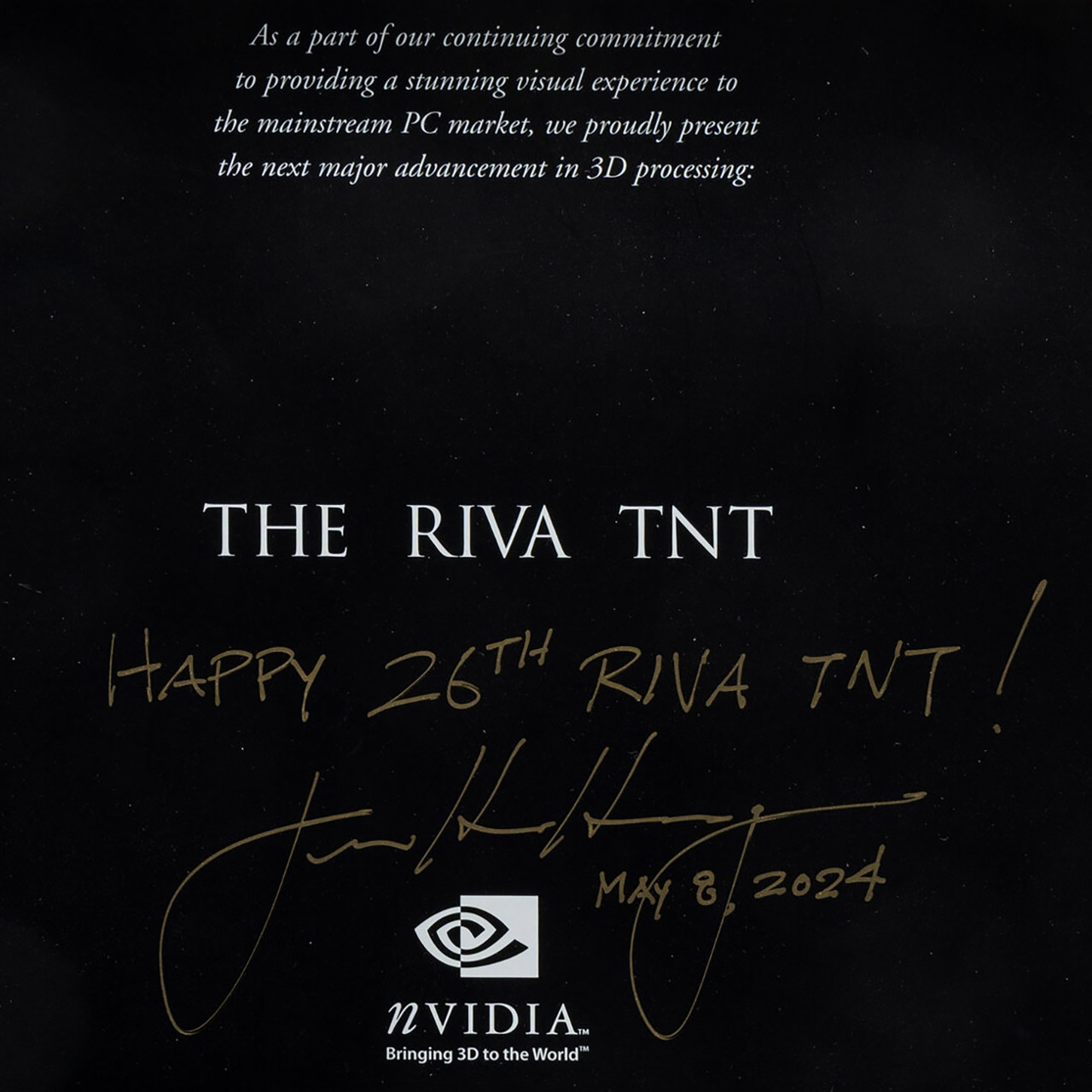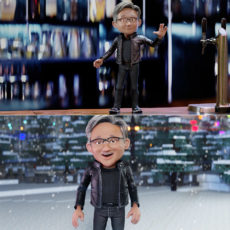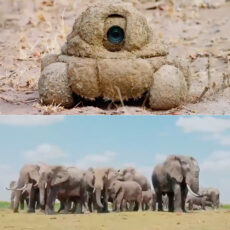
This incredibly rare 1998 NVIDIA RIVA TNT engineering prototype kit and a promotional lunchbox, both reportedly signed by NVIDIA CEO Jensen Huang, could be yours for the right price. Don’t know what RIVA TNT is? Well, it’s a groundbreaking graphics card (then called a “video accelerator”) that played a pivotal role in NVIDIA’s rise to dominance in the graphics industry.

In 1998, the term “GPU” (graphics processing unit) hadn’t been invented by NVIDIA—that happened with the GeForce 256 in 1999. The RIVA TNT was a powerful 2D/3D graphics card that went up against competitors like 3Dfx’s Voodoo series. It supported 32-bit color (a big deal back then), had a 100 MHz core clock, and could have up to 16 MB of SGRAM. It was one of the earliest cards to provide strong 3D performance, with features like bilinear filtering, fog effects, and enhanced texture mapping.
- Powered by the NVIDIA Blackwell architecture and DLSS 4
- Military-grade components deliver rock-solid power and longer lifespan for ultimate durability
- Protective PCB coating helps protect against short circuits caused by moisture, dust, or debris
The RIVA TNT was a key player, doing better than 3Dfx’s Voodoo2 in some cases (especially at higher resolutions) and laying the groundwork for NVIDIA’s GeForce lines. It played a key role in making NVIDIA a top name in 3D graphics. It powered late ‘90s PC games like Quake II and Unreal, giving smoother visuals and brighter colors, which made it a hit with gamers.

As for the “TNT” in RIVA TNT, it stands for “TwiN Texel,” referring to its dual-texel processing pipelines, which allowed it to handle two texture pixels simultaneously. This was a cutting-edge feature that gave it an edge in rendering complex 3D scenes, making games like Quake II look smoother and more vibrant.

Early RIVA TNT cards were notorious for running hot, especially when pushed to their limits. Some users reported needing extra cooling fans, and tech forums from the era buzzed with DIY cooling hacks—a testament to the card’s power-hungry nature. It launched at around $200–$300, which was pricey for 1998 (equivalent to ~$350–$500 today). This made it a premium choice for hardcore gamers, but its performance justified the cost for those chasing the best visuals.

What you’re looking at in this auction is an untested engineering sample of the RIVA TNT graphics card, meaning it’s a pre-production model used for testing and development. These prototypes are incredibly rare since they were never meant for public sale. The card comes in a metal briefcase with foam padding, which reportedly has a handwritten note from Jensen Huang: “Happy 26th RIVA TNT, May 8, 2024.”

It comes with a limited-edition lunchbox originally distributed to a small group of NVIDIA employees and select journalists. It features retro ‘80s-style graphics and bold slogans like “Protecting the world from mediocrity,” poking fun at competitors, while also being signed by Jensen Huang. Interested? You can bid on it here.










